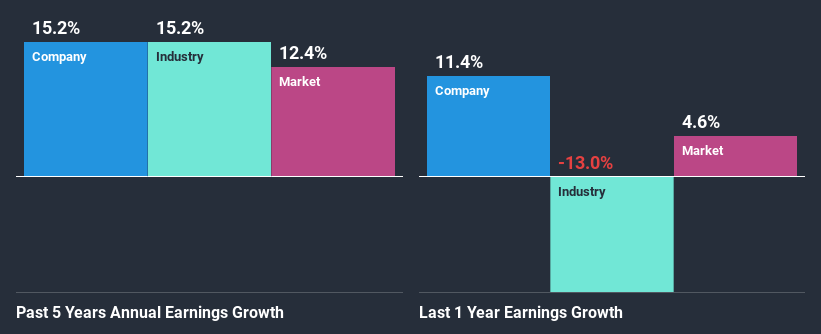Are Strong Financial Prospects The Force That Is Driving The Momentum In PWR Holdings Limited's ASX:PWH) Stock?
Most readers would already be aware that PWR Holdings' (ASX:PWH) stock increased significantly by 28% over the past three months. Given the company's impressive performance, we decided to study its financial indicators more closely as a company's financial health over the long-term usually dictates market outcomes. In this article, we decided to focus on PWR Holdings' ROE.
Return on Equity or ROE is a test of how effectively a company is growing its value and managing investors’ money. Simply put, it is used to assess the profitability of a company in relation to its equity capital.
See our latest analysis for PWR Holdings
How Do You Calculate Return On Equity?
Return on equity can be calculated by using the formula:
Return on Equity = Net Profit (from continuing operations) ÷ Shareholders' Equity
So, based on the above formula, the ROE for PWR Holdings is:
29% = AU$16m ÷ AU$56m (Based on the trailing twelve months to December 2020).
The 'return' refers to a company's earnings over the last year. One way to conceptualize this is that for each A$1 of shareholders' capital it has, the company made A$0.29 in profit.
What Has ROE Got To Do With Earnings Growth?
Thus far, we have learned that ROE measures how efficiently a company is generating its profits. Depending on how much of these profits the company reinvests or "retains", and how effectively it does so, we are then able to assess a company’s earnings growth potential. Assuming everything else remains unchanged, the higher the ROE and profit retention, the higher the growth rate of a company compared to companies that don't necessarily bear these characteristics.
PWR Holdings' Earnings Growth And 29% ROE
Firstly, we acknowledge that PWR Holdings has a significantly high ROE. Additionally, the company's ROE is higher compared to the industry average of 20% which is quite remarkable. This likely paved the way for the modest 15% net income growth seen by PWR Holdings over the past five years. growth
Next, on comparing PWR Holdings' net income growth with the industry, we found that the company's reported growth is similar to the industry average growth rate of 15% in the same period.
Earnings growth is an important metric to consider when valuing a stock. What investors need to determine next is if the expected earnings growth, or the lack of it, is already built into the share price. Doing so will help them establish if the stock's future looks promising or ominous. Is PWR Holdings fairly valued compared to other companies? These 3 valuation measures might help you decide.
Is PWR Holdings Using Its Retained Earnings Effectively?
While PWR Holdings has a three-year median payout ratio of 61% (which means it retains 39% of profits), the company has still seen a fair bit of earnings growth in the past, meaning that its high payout ratio hasn't hampered its ability to grow.
Besides, PWR Holdings has been paying dividends over a period of five years. This shows that the company is committed to sharing profits with its shareholders. Based on the latest analysts' estimates, we found that the company's future payout ratio over the next three years is expected to hold steady at 54%. Accordingly, forecasts suggest that PWR Holdings' future ROE will be 29% which is again, similar to the current ROE.
Summary
On the whole, we feel that PWR Holdings' performance has been quite good. In particular, its high ROE is quite noteworthy and also the probable explanation behind its considerable earnings growth. Yet, the company is retaining a small portion of its profits. Which means that the company has been able to grow its earnings in spite of it, so that's not too bad. Having said that, looking at the current analyst estimates, we found that the company's earnings are expected to gain momentum. To know more about the company's future earnings growth forecasts take a look at this free report on analyst forecasts for the company to find out more.
This article by Simply Wall St is general in nature. It does not constitute a recommendation to buy or sell any stock, and does not take account of your objectives, or your financial situation. We aim to bring you long-term focused analysis driven by fundamental data. Note that our analysis may not factor in the latest price-sensitive company announcements or qualitative material. Simply Wall St has no position in any stocks mentioned.
Have feedback on this article? Concerned about the content? Get in touch with us directly. Alternatively, email editorial-team (at) simplywallst.com.


